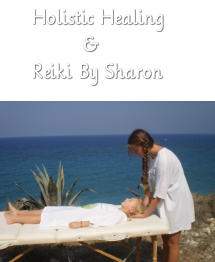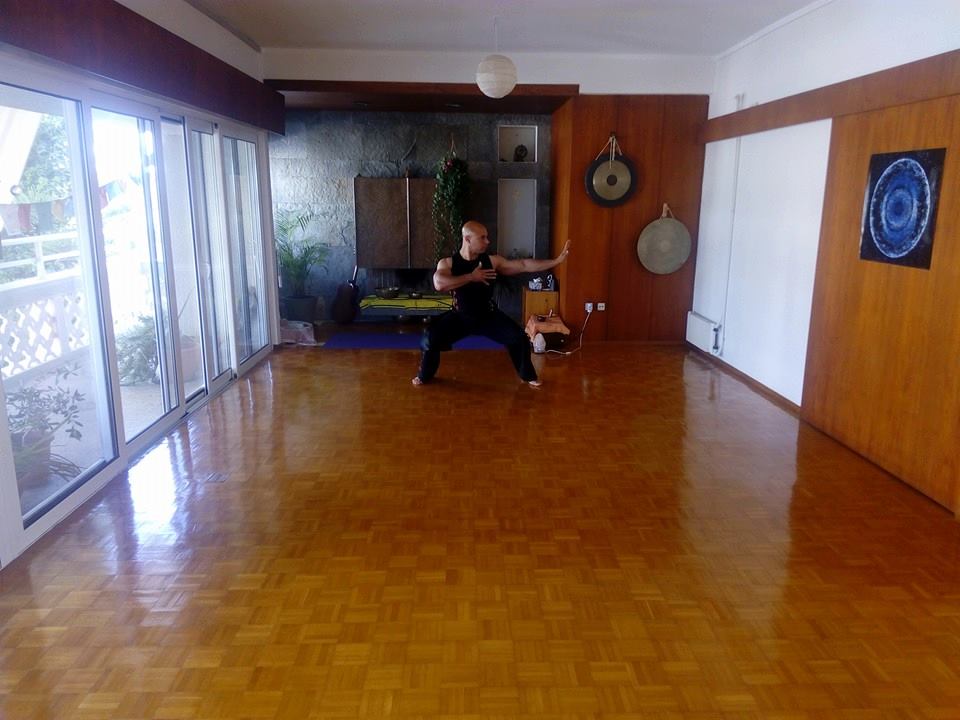qi gong and chakra balancing day saturday 16th july 10am till 1pm
facilitated by johnathan sheldon and stuart brown
only 25 euro for the full 3 hours
limited places please book your space
Also jonny will have two chi kung classes at 9:30 Wednesday and Friday at Davids studio yoga now and he will be teaching yang style and eight brocade. 10 euros
about the healers
Stuart Brown is a professional healer and has visited the island many times over the past six years. He is a tutor for the LDHA and a member of the Healing Trust. He has over 25 years experience working at home and abroad.
Jonny Sheldon started training as a Martial Artist at the age of twelve, training in hard and soft styles of Chinese Martial Arts Hard, Yang , Kung Fu Soft, Yin, Chi Kung or Qigong and TaiChi- Yang and Chen Style.. He started Healing in 1996 and trained in Usui system of Reiki, Tibetan Reiki, Seichem (elemental healing of earth,water,fire,air and spirit), Chi healing and energy balancing. He has over 20 years of experience in healing and 28 years experience in chi kung and martial arts.
Qigong
Qigong (alternatively spelled chi gung or chi kung) is a form of gentle exercise composed of movements that are repeated a number of times, often stretching the body, increasing fluid movement (blood, synovial and lymph) and building awareness of how the body moves through space.
When you practice and learn a qigong exercise movement, there are both external movements and internal movements. These internal movements or flows in China are called neigong or "internal power". These internal neigong movements make qigong a superior health and wellness practice.
The internal movements also differentiate qigong from almost every other form of exercise in the West that often emphasizes prolonged cardiovascular movements (such as in running and biking) or that focus on muscular strength training (weight lifting).
Qigong represents a total system of energy work and personal development system. The exercises presented the Energy Arts Qigong Exercise Program are all that are necessary to maintain high-level health and increase overall awareness. This set of exercises can also serve as warm-up exercises for internal martial artists and energetic healers. These will give the average person at least as much internal benefit as they would most likely obtain from the practice of tai chi with the vast majority of the tai chi teachers in the West, as most teachers either do not know or do not share information regarding the internal energy work of tai chi.
Eight Pieces of Brocade(Baduanjin)
The Baduanjin as a whole is broken down into eight separate exercises, each focusing on a different physical area and qi meridian. The Baduanjin traditionally contains both a standing and seated set of eight postures each. In the modern era, the standing version is by far the most widely practiced. The particular order in which the eight pieces are executed sometimes varies, with the following order being the most common.
Standing
Two Hands Hold up the Heavens (Shuang Shou Tuo Tian)
This move is said to stimulate the "Triple Warmer" meridian (Sanjiao). It consists of an upward movement of the hands, which are loosely joined and travel up the center of the body.
Drawing the Bow to Shoot the Eagle / Hawk / Vulture
While in a lower horse stance, the practitioner imitates the action of drawing a bow to either side. It is said to exercise the waist area, focusing on the kidneys and spleen.
Separate Heaven and Earth
This resembles a version of the first piece with the hands pressing in opposite directions, one up and one down. A smooth motion in which the hands switch positions is the main action, and it is said to especially stimulate the stomach.
Wise Owl Gazes Backwards or Look Back
This is a stretch of the neck to the left and the right in an alternating fashion.
Sway the Head and Shake the Tail
This is said to regulate the function of the heart and lungs. Its primary aim is to remove excess heat (or fire) (xin huo) from the heart. Xin huo is also associated with heart fire in traditional Chinese medicine. In performing this piece, the practitioner squats in a low horse stance, places the hands on thighs with the elbows facing out and twists to glance backwards on each side.
Clench the Fists and Glare Fiercely (or Angrily)
This resembles the second piece, and is largely a punching movement either to the sides or forward while in horse stance. This, which is the most external of the pieces, is aimed at increasing general vitality and muscular strength.
Two Hands Hold the Feet to Strengthen the Kidneys and Waist This involves a stretch upwards followed by a forward bend and a holding of the toes.
Bouncing on the Toes
This is a push upward from the toes with a small rocking motion on landing. The gentle shaking vibrations of this piece is said to "smooth out" the qi after practice of the preceding seven pieces or, in some systems, this is more specifically to follow Sway the Head and Shake the Tail.
Jonny Sheldon started training as a Martial Artist at the age of twelve, training in hard and soft styles of Chinese Martial Arts Hard, Yang , Kung Fu Soft, Yin, Chi Kung or Qigong and TaiChi- Yang and Chen Style.. He started Healing in 1996 and trained in Usui system of Reiki, Tibetan Reiki, Seichem (elemental healing of earth,water,fire,air and spirit), Chi healing and energy balancing. He has over 20 years of experience in healing and 28 years experience in chi kung and martial arts.
Qigong
Qigong (alternatively spelled chi gung or chi kung) is a form of gentle exercise composed of movements that are repeated a number of times, often stretching the body, increasing fluid movement (blood, synovial and lymph) and building awareness of how the body moves through space.
When you practice and learn a qigong exercise movement, there are both external movements and internal movements. These internal movements or flows in China are called neigong or "internal power". These internal neigong movements make qigong a superior health and wellness practice.
The internal movements also differentiate qigong from almost every other form of exercise in the West that often emphasizes prolonged cardiovascular movements (such as in running and biking) or that focus on muscular strength training (weight lifting).
Qigong represents a total system of energy work and personal development system. The exercises presented the Energy Arts Qigong Exercise Program are all that are necessary to maintain high-level health and increase overall awareness. This set of exercises can also serve as warm-up exercises for internal martial artists and energetic healers. These will give the average person at least as much internal benefit as they would most likely obtain from the practice of tai chi with the vast majority of the tai chi teachers in the West, as most teachers either do not know or do not share information regarding the internal energy work of tai chi.
Eight Pieces of Brocade(Baduanjin)
The Baduanjin as a whole is broken down into eight separate exercises, each focusing on a different physical area and qi meridian. The Baduanjin traditionally contains both a standing and seated set of eight postures each. In the modern era, the standing version is by far the most widely practiced. The particular order in which the eight pieces are executed sometimes varies, with the following order being the most common.
Standing
Two Hands Hold up the Heavens (Shuang Shou Tuo Tian)
This move is said to stimulate the "Triple Warmer" meridian (Sanjiao). It consists of an upward movement of the hands, which are loosely joined and travel up the center of the body.
Drawing the Bow to Shoot the Eagle / Hawk / Vulture
While in a lower horse stance, the practitioner imitates the action of drawing a bow to either side. It is said to exercise the waist area, focusing on the kidneys and spleen.
Separate Heaven and Earth
This resembles a version of the first piece with the hands pressing in opposite directions, one up and one down. A smooth motion in which the hands switch positions is the main action, and it is said to especially stimulate the stomach.
Wise Owl Gazes Backwards or Look Back
This is a stretch of the neck to the left and the right in an alternating fashion.
Sway the Head and Shake the Tail
This is said to regulate the function of the heart and lungs. Its primary aim is to remove excess heat (or fire) (xin huo) from the heart. Xin huo is also associated with heart fire in traditional Chinese medicine. In performing this piece, the practitioner squats in a low horse stance, places the hands on thighs with the elbows facing out and twists to glance backwards on each side.
Clench the Fists and Glare Fiercely (or Angrily)
This resembles the second piece, and is largely a punching movement either to the sides or forward while in horse stance. This, which is the most external of the pieces, is aimed at increasing general vitality and muscular strength.
Two Hands Hold the Feet to Strengthen the Kidneys and Waist This involves a stretch upwards followed by a forward bend and a holding of the toes.
Bouncing on the Toes
This is a push upward from the toes with a small rocking motion on landing. The gentle shaking vibrations of this piece is said to "smooth out" the qi after practice of the preceding seven pieces or, in some systems, this is more specifically to follow Sway the Head and Shake the Tail.

